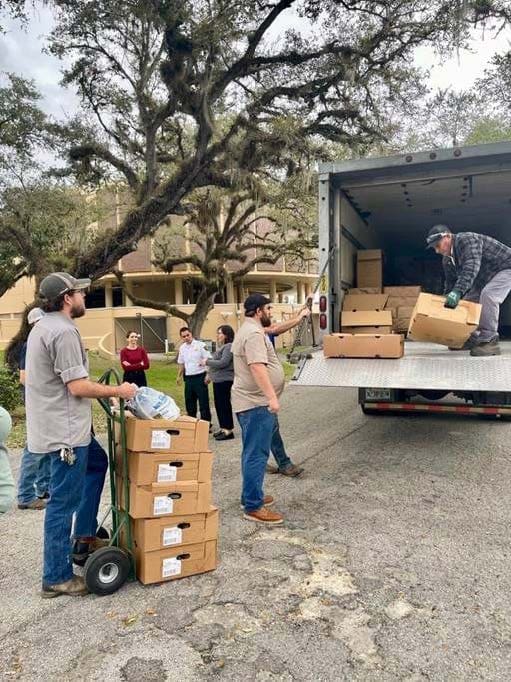Sanibel Mayor Kevin Ruane: “water storage within the Caloosahatchee watershed” needed
In a letter to the editor in today’s Fort Myers News-Press, Mayor Ruane also affirms “red tide blooms are initiated offshore in the Gulf of Mexico and are not the result of Lake releases.”
Heavy rains force need for more storage
By Kevin Ruane
Fort Myers News-Press
February 5, 2016
The following is a letter written by City of Sanibel mayor Kevin Ruane to the other mayors of municipalities n Lee County on water issues. He agreed to have the letter published as an op-ed in the Views section of The News-Press.
An extremely wet January has pushed water levels in Lake Okeechobee to 16.22 feet as of Feb 2. With Lake Okeechobee rising into the “Intermediate” sub-band, the Army Corp of Engineers, in accordance with the 2008 Lake Okeechobee Regulation Schedule, began increased regulatory releases to the Caloosahatchee and St. Lucie estuaries on Saturday, Jan. 30. The target flows are a constant release of 6,500 cubic feet into Caloosahatchee and a 2,800 into the St. Lucie, the maximum allowable releases under the current operation schedule.
Although the City of Sanibel is extremely concerned about the potential impacts of these damaging releases to the Caloosahatchee and estuary, our beaches, our water quality and our economy, it is important that we send a consistent and factual message to the Corps, Southwest Florida Management District and the media about the reality of the impacts observed in our communities.
To further complicate the situation, the initiation of increased Lake Okeechobee regulatory releases comes on top of extensive wash-ups of marine life on local beaches due to high wind and storm conditions and moderate fish kills due to increased concentrations of red tide along some county beaches (a patchy red tide bloom has persisted from Pinellas County south to Lee County since late fall of 2015).
While it may be tempting to blame all adverse water conditions on Lake Okeechobee releases, it is not accurate to do so. Red tide blooms are initiated offshore in the Gulf of Mexico and are not the result of Lake releases. Water that appears brown in color is also not necessarily the result of Lake Okeechobee releases. Freshwater running off the land carries tannins from plants and other organic material that turn the water the dark brown color. Sediments from land runoff and enormous volumes of fast moving water result in increased turbidity.
Despite the initiation of increased Lake Okeechobee regulatory releases, over the last four days approximately 70% of the current water flow is runoff from the Caloosahatchee watershed. While championing the need to move water from Lake Okeechobee to the south, the City of Sanibel has consistently recognized our need for water storage within the Caloosahatchee watershed.
In particular, the conditions over the last week have clearly illustrated how desperate this need remains. On Thursday, Jan. 28, flows at the Franklin Lock and dam measured 12,270 cfs, while outflows from Lake Okeechobee measured zero. That is, 100% of the flow in the Caloosahatchee was the result of runoff from the Caloosahatchee watershed, not Lake Okeechobee releases.
Conditions were similar on Friday, Jan. 30. Flows at the lock measured 14,280, while outflows from the lake remained at zero.
Since the increased releases were initiated four days ago, flows at the lock have averaged 12,294, while outflows from the lake averaged 3,884, meaning the releases have accounted for only 30 percent of the total runoff. However, if and when watershed flow decreases, it is likely that we will continue to receive maximum lake discharges (6,500 cfs) for the foreseeable future. Average monthly flow greater than 6,500 measured in the Caloosahatchee whether from lake releases or watershed runoff, will result in mortality of marine organisms and seagrasses in Pine Island Sound and the Gulf of Mexico.
With above average rainfall conditions expected for another three months, it is imperative we explore all options to implement and maximize storage on all private lands including those currently under contract with the water management district for the dispersed water management program and utilize emergency storage on all public lands within the Kissimmee, Lake Okeechobee, St. Lucie and Caloosahatchee basins. Within Lee County, potential opportunities for storage at the Bob Janes Preserve and other Lee County 20/20 or other available public lands must be explored.
We must also challenge the Army Corps and the district o identify and exercise all operational flexibility within their power to hold more water in the Lake and other available storage areas. Specifically, this will include continued evaluation of the Lake O regulation schedule risk assessment to identify any opportunities to provide more storage to reduce discharges to the estuaries in light of ongoing improvements to the Herbert Hoover Dike.





